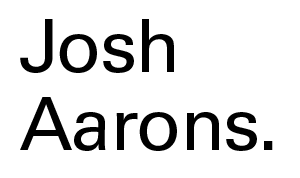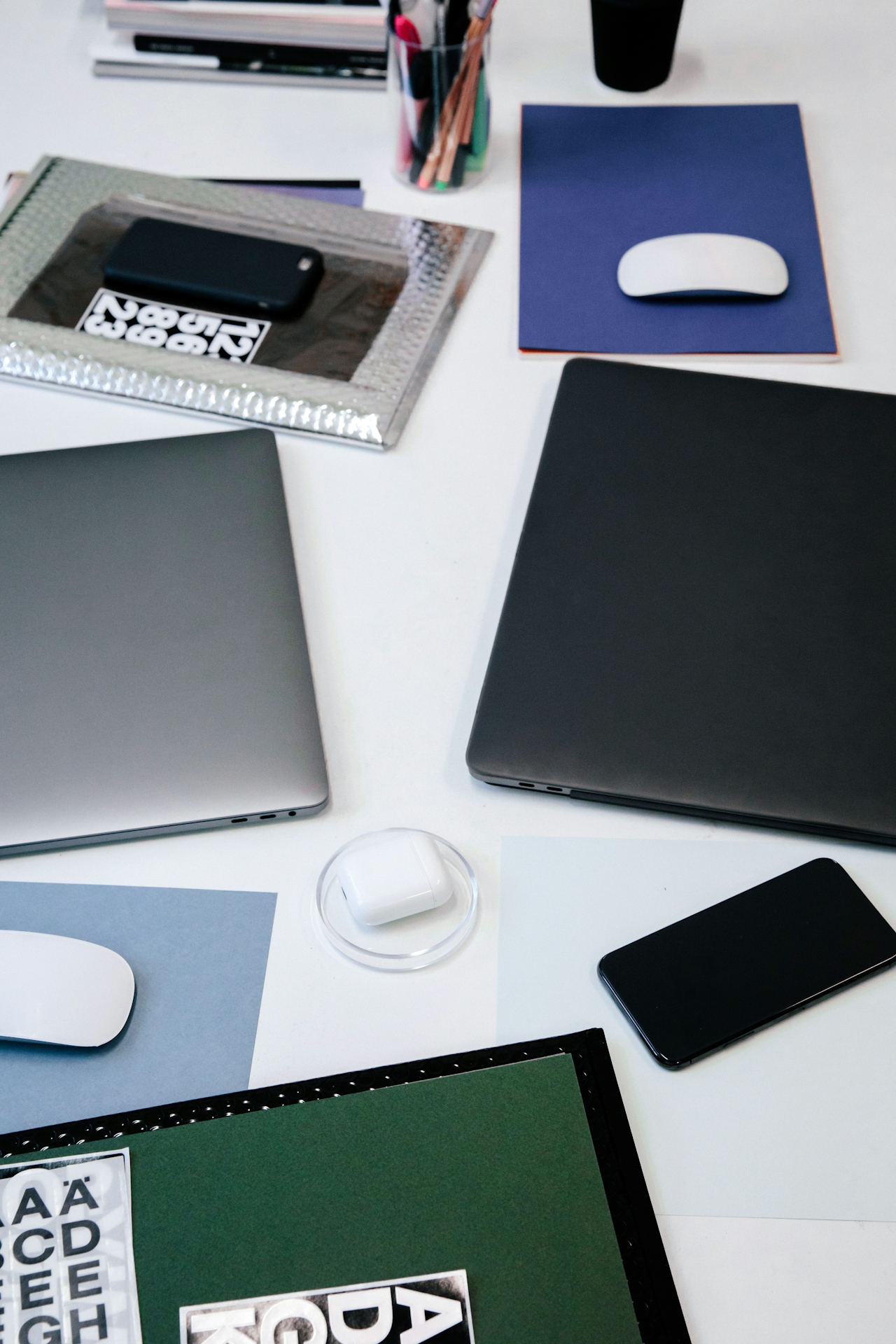Why Intuition is our Creative Superpower
People love to talk about talent, technique, and originality—the traits that make something impressive, refined, or innovative. But intuition? Not so much. When it does come up, it’s often treated as a lucky guess, a fleeting hunch, or something that can’t be explained. It's that 'fluff' which some people turn their noses up at.
But intuition isn’t random or fluffy. And not every creative has it.
In my mind, there are four types of people when it comes to intuition in creative work, I've called them:
- The Outsiders – Those who think intuition is ‘woo woo bollocks’, the creative equivalent of wishful thinking. They rely on logic, trends, or external approval and trust hard data over instinct every time.
- The Technical Creative – Highly skilled and methodical but lacking instinctual decision-making. These creatives execute well but struggle to step out of the box and make bold, intuitive leaps because they want everything to be backed by proof or to follow a well-trodden path.
- The Promising Intuitive – They have strong instincts and moments of deep creative insight but haven’t fully learned to trust themselves. Their intuition is real and powerful, but self-doubt or overthinking can get in the way. Yet, when they lean in and develop that trust in themselves, they often make some of the most interesting and unexpected creative choices.
- The Intuitive Pro – Those who have learned to fully trust and refine their intuition. They blend instinct with skill and experience, making creative choices that feel effortless—not because they are easy, but because they come from deep understanding. These are the creatives who shape culture rather than follow it.
Which one are you? When I was writing this, I had to ask myself where I sit on the spectrum. If I’m honest, creatively, I’d say I’m somewhere, fluctuating, between Promising and Pro, still refining the balance between instinct and action. And let’s be real, even those who live in the Pro space still have moments of doubt or second-guessing. Mastery isn’t about never questioning yourself—it’s about learning to trust your instincts just a bit more often than not.
Intuition isn’t magic, although sometimes it feels like it.
In reality, intuition is pattern recognition, the ability to read and understand non-verbal cues, and a mental filing cabinet of past experiences, references, and connections—all working in harmony. It’s about connecting seemingly unrelated ideas and anticipating a person’s wants or needs, even when they struggle to articulate them. When you trust yourself, you start making decisions before logic fully catches up.
How intuition plays out in my creative work
- In conversation – Picking up on subtle cues, subtext, and what’s left unsaid, and asking the right questions to get a clearer picture. Ideas come fast. I get excited when the dots suddenly connect. More often than not, the original brief gets completely reshaped at this point.
- In conceptual development – Instinctively knowing when something “feels right” before fully understanding why. The analytical folks hate this moment because it's intangible—which is where trust and the right relationships come into play.
- In execution – Trusting a decision even when it can’t be logically justified yet—because sometimes the logic only becomes clear after the fact. It’s about confidently standing behind a creative choice, knowing that intuition has already done the work before reason catches up. The right direction isn’t always the most obvious one, but when your intuition is sharp, you recognise it before others do.
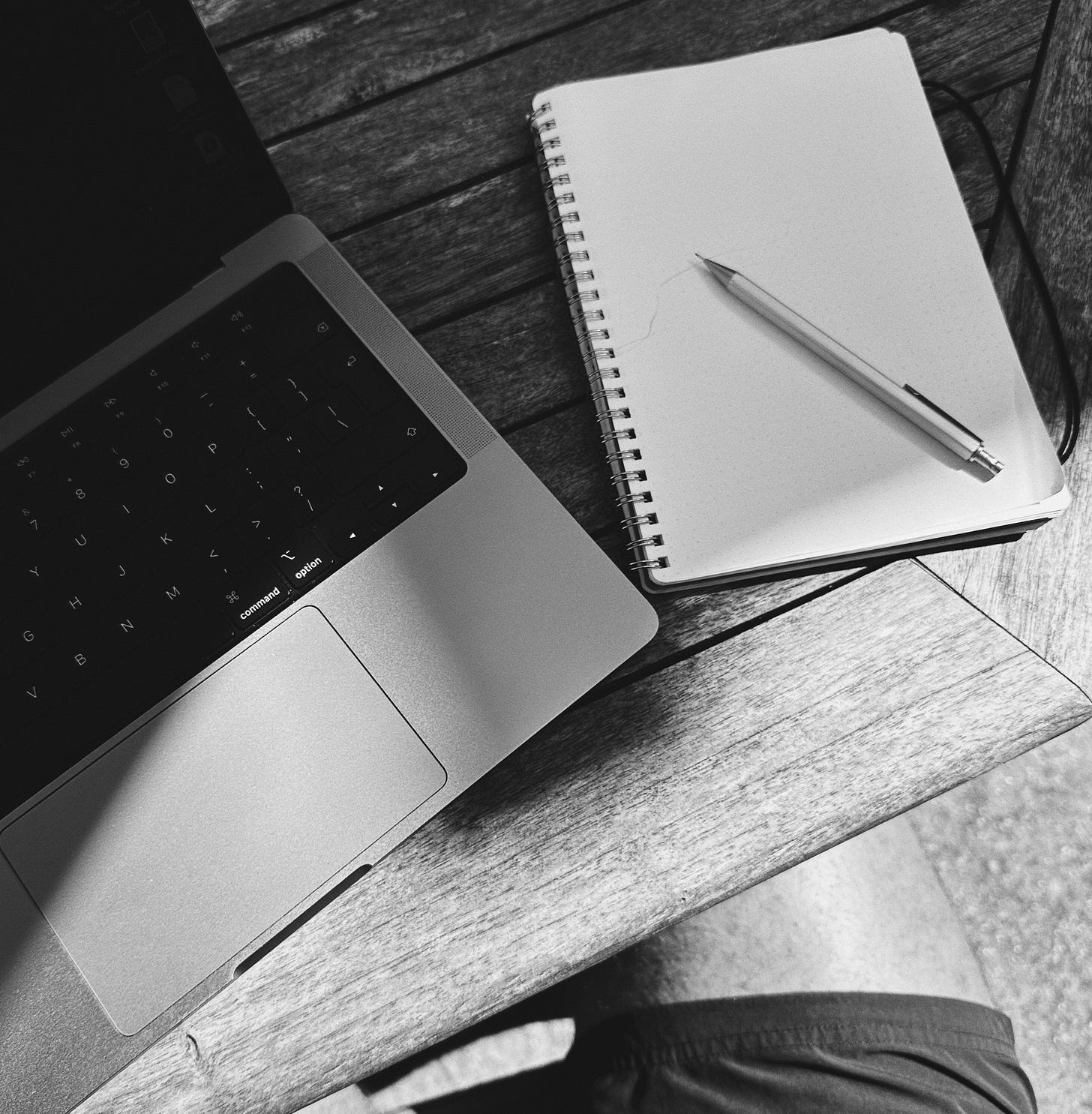
Creativity can’t be measured in clicks
To be completely frank, my relationship with intuition hasn’t always been smooth. When I worked as Head of Marketing in tech, I tried to embrace data-driven approaches—CPC rates, programmatic marketing and analytics reports—because that's what my peers swore by and I felt I had to follow. But creative work isn’t an equation. As Seth Godin says ‘Marketing isn’t advertising, it used to be but it’s not anymore. Marketing is what we make, how we make it, how we talk about it and who we make it for’.
My best decisions never came from A/B testing; they came from instinct, from knowing what would resonate. And it turns out, ‘because it just feels right’ isn’t always the answer people want to hear—but more often than not, it was the right one. If the people around you don’t like the answer, maybe it’s time to change the people around you.
How to improve your intuition
Recognise that intuition does not come naturally to everyone, but for those who it does, the best way to refine it is to listen more than you speak.
- The more you listen, the sharper your intuition becomes—it’s about tuning in, not just hearing.
- If something feels right, trust it before you try to rationalise it away. Listen to your gut, you know? Look for patterns everywhere—conversations, design, behaviour etc—because it’s all connected.
- And sometimes, the best way to refine intuition is to step back. Some of the clearest decisions come when you stop forcing them and allow space for your subconscious to do the work.
When intuition is ‘ON’, it’s like stepping into the jet stream, wind in your sails and flowing. That’s when intuition stops being just a soft skill and starts feeling like something more—magical even.
If you’re reading this, chances are, you already know what I mean. You’ve felt it—that moment when things just click, and you see the answer before you can explain why. Maybe you’ve second-guessed it before, talked yourself out of it, tried to justify it with data, trends or external validation. But intuition doesn’t wait around for justification.
The more you trust it, the sharper it gets. The more you lean into it, the clearer it becomes. And when you do, you’ll find yourself moving with confidence—because really, deep down, you already know. Right? Right.
If this resonates with you, let me know—I’d love to hear from you.
6 years ago I wrote an article about AI taking over our jobs and today where we are and what’s changed?
At the time of writing this, it has been 6 years, 3 months, 2 weeks and 3 days since I penned my original article titled: Job security: What happens when AI takes over web design?

The notion of AI felt fringe at best. Having worked in tech, the insider secret we believed was that genuine artificial intelligence was not real…yet. AI was nothing more than a buzzword, something that every software company in the world claimed they did but in reality, was nothing more than marketing masking data analytics.
But something was stirring. Murmurs were whispering in the air. And I wasn’t alone in my thoughts. In 2017 I had recently stepped down from a full-time head of marketing position for a SAAS business to take on more creative adventures.
Back then, the idea of AI taking over our jobs as web designers and website builders was a farfetched concept amongst my friends. The threat from the Wixs and Squarespaces of the world, gunning for our bread and butter — now that was frightening.
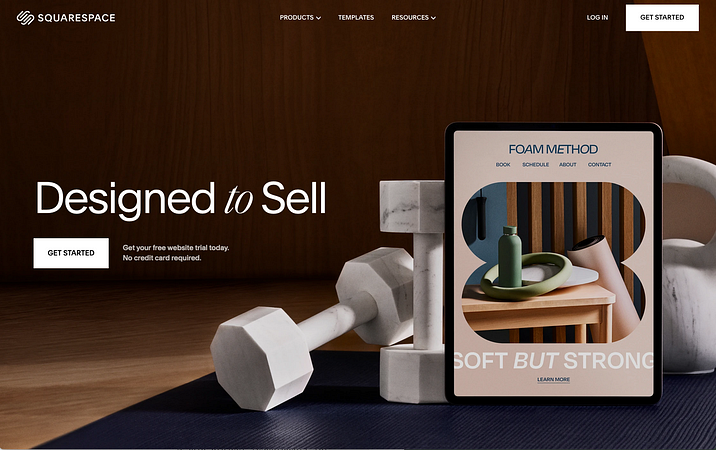
DIY website software companies were levelling the playing field. They were the egalitarians of the internet, who were enabling your average Joe or Jane to create their website for their hobby, business or whatever with nothing but a subscription. It was an honest threat — tangible and at times stinging for those of us with smaller customer bases.
Yet on reflection 6 years later, those products were saviours for designers. They gave agency and autonomy to would-be clients who wanted a website but could not justify paying a fair price for a designer. It qualified the serious people from the hobbyists and reduced a lot of mid-project resentment, for both parties. Resentment from the client who doesn’t see the financial value in ‘paying someone for something I can do’, and resentment from the designer who likely took on the project for less compensation than they should have, thinking it was ‘going to be quick’.
Whilst Squarespace and Wix had little to do with AI, there was ‘The Grid’, the Utopian-clever-website-machine that sought to ‘democratise the internet’. What happened? I had huge hopes for this tool and imagined it becoming the gold standard of DIY website products.
Yes, several versions were released, but sadly The Grid hit some rather public stumbling blocks, missed released dates and over time angered their customers — read about that here: https://www.pagecloud.com/blog/what-happened-to-the-grid.
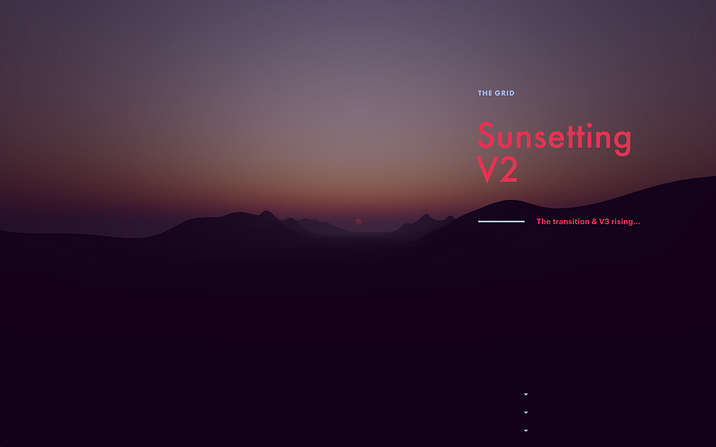
Finally their team ‘sunset’ its V2 product sometime around March 2019 after all its customer’s websites went offline https://web.archive.org/web/20190305002015/https://thegrid.io/. It’s a classic startup-go-bust story but at the time I remember thinking that this was the future. Perhaps the Grid will return?
Now the truth about AI today, its impact on people, job security, and the economy is way beyond the scope of what I wanted to write here. But it is real now, it’s not a gimmick, it’s not false advertising, it is still a marketing tool, but it’s so very very real now.
Whether we know it or not, we interact with AI daily. Did I write this article? Or did Chat GPT*? Think about that for a second, because I can bet you money that more of what you’re reading and consuming on social media and the internet is created with or assisted by AI than you could imagine.
*ChatGPT didn’t write this, it’s all me baby.
Now while I don’t design or code as many websites as I used to, there’s not a designer I know who doesn’t use AI in some capacity. In 6 years we’ve gone from concern of AI taking our jobs to actively using AI as part of the designer’s toolkit. How and what?
ChatGPT
- Writing lengthy proposal emails.
- Responding to lengthy and unreasonable client emails.
- Structuring webpage content that a client has provided.
- Condensing content that a client has provided.
- Creating more client-focused ‘Lorem ipsum’ placeholder text. (You’ll be surprised how many companies end up keeping what you generated!)
Midjourney + DALL-E 2
- Create royalty-free images as placeholders with no concerns about licensing.
- Create images that are exactly what you’re looking for without having to trawl through Unsplash or Pexels.
Adobe AI
- Modify an image perfectly so it fits your requirements.
- Seamlessly remove objects or add objects from an image in seconds.
GitHub Copilot
- Check your code.
- Build an app.
These examples are honestly basic-level uses of AI, and this isn’t another list article for every AI tool in the world, there are plenty of those and plenty more apps for voice, image, video and audio generation.
No, what this is is a reflection on mild concern in 2017 when AI wasn’t really real in the way it is today to designers ‘sleeping with the enemy’ as part of their day-to-day.
What strikes me is how accurate my previous closing statements were back in 2017, and how many of the designers I know did adapt and evolve.
What is clear is that this should be an early warning sign to current and future web designers that the tides are changing. Adaptation and evolution should be high on your agenda.Consider how you could fit into that web designer-less world when it eventually comes. And when it comes, you want to be there at the front of the line, because in a similar fashion to the automotive and production industries, there will still be a limited number of jobs for humans, and the same will become true for web designers.
Today, the word ‘designer’ in the context of my article is completely interchangeable with almost any profession that involves a computer.
But will that truly happen? Will there be no designers or creatives eventually? While it is true that the power of AI’s capabilities and growth seems limitless, I have a strong belief that we are a long way off from that point.
I feel like we are in a similar place to where we were when I wrote my original article — like a ship at sea, as we sail forward we are always moving towards the horizon and passing the things that were once hidden, we do this every day. Yet again, I sense something else on the horizon, it’s still a way off, but as of now, rest assured knowing a few things:
- People are using AI for lazy tasks.
- The people that do use AI, probably don’t use it very well.
- Until the point where AI begins prompting itself to complete a start-to-finish workflow that has real-world significance, AI can only ever be a piece of the puzzle.
My interpretation of the situation is that the sentiment above still applies. Adaption and evolution should be high on your agenda, for the tides are changing. And whether that’s simply getting a better understanding of what AI means for you, or fully integrating AI into your workflows is your prerogative.
Do you use AI in your work? Where do you see it going? Are you concerned? If I revisit this in 6 years, where do you think we will be?
Guest on the 'Conversations with Friends' Podcast!
I recently got invited by entrepreneur and good friend of mine Ed Thomas, Co-Founder of VReel.co, to be the first gues on the official VReel Podcast 'Conversations with Friends'. VReel is a super high quality and highly-curated drone stock footage platform - so it's an honour to be associated with VReel and even more fun to have a chat with my friend.
We spoke about my somewhat unconventional, 'around the houses', route to what I do now; filmmaking. I go over some of the hurdles I encountered along the way and the steps I took to overcome those challenges, as well as the challenges I still face to 'make it' in independent film.
I really hope you enjoy the podcast and get some value and insights. Huge thank you to Ed and Emelie Klasson at Vreel.co for having me on. You can listen to the Podcast below:
And read the original blog on the VReel Blog:
https://vreel.co/blog/how-to-become-a-filmmaker/
Image by Hattie Ellis
